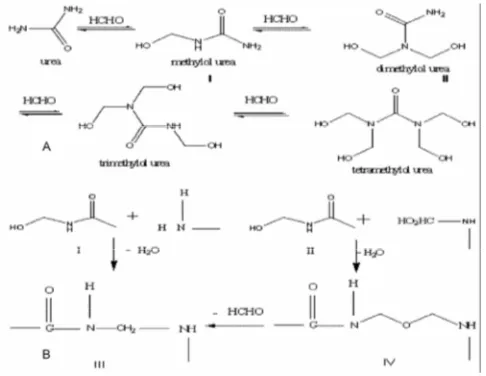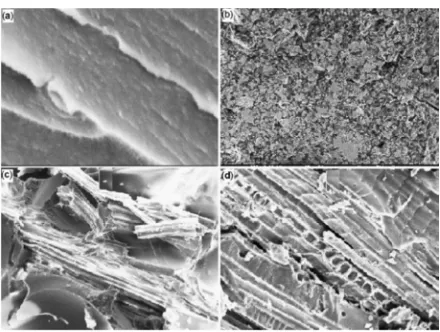Journal of Chemical and Pharmaceutical Research, 2015, 7(3):383-387
Research Article
CODEN(USA) : JCPRC5ISSN : 0975-7384Research on mechanical properties of the composites polymer fiber reinforced:
A case study
Min Wen
Department of Civil and Architectural Engineering Nanchang Institute of Technology No.289, Tianxiang road, Nanchang, China
_____________________________________________________________________________________________
ABSTRACT
Fiber reinforced polymer Resin matrix composites have the good performance, and it is widely used in various fields to release the impact load. Over the past era of time, natural fibers have gained bursting attention than ever before from all the other research areas around the world. These natural fibers provide a plenty of advantages and strengthen than the other fibers. In this paper, we conduct a case study of the synthesis and mechanical properties of novel series of green composites including Hibiscus sabdariffa fiber as a reinforcing material in urea–formaldehyde (UF) resin based polymer matrix has been reported. Static mechanical properties of the previous randomly oriented intimately mixed Hibiscus sabdariffa fiber reinforced polymer composites such as tensile, compressive and wear properties are investigated as well. Initially urea–formaldehyde resin prepared is subjected to evaluation of its optimum mechanical properties. Then reinforcing of the resin with Hibiscus sabdariffa fiber is accomplished in three different forms: particle size, short fiber and long fiber by employing optimized resin. Proposed research reveals that mechanical properties such as tensile strength, compressive strength and wear resistance of the urea–formaldehyde resin increases to considerable extent when reinforced with the fiber. Thermal and morphological studies of the resin and bio-composites have also been conducted.
Key words: Fiber reinforced; Composites; Case Study; Mechanical Properties
_____________________________________________________________________________________________
INTRODUCTION
The advantages of natural fibers over traditional reinforcing materials such as glass fiber, carbon fiber etc are their specific strength properties, easy availability, light weight, ease of separation, enhanced energy recovery, high toughness, non-corrosive nature, low density, low cost, good thermal properties, reduced tool wear, reduced dermal and respiratory irritation, less abrasion to processing equipment, renewability and biodegradability (Lawton and Fanta 1994; Simon et al 1998; Chauhan et al 1999, 2001; Joshi et al 2004; Singha et al 2004)[1-5]. It has been observed that natural fiber reinforced composites have properties similar to traditional synthetic fiber reinforced composites. Natural fiber composites have been studied and reviewed by a number of researchers (Dufresne 1997; Dufresne and Vignon 1998; Mao et al 2000; Kaith et al 2003; Nakagaito et al 2004, 2005; Bhatnagar and Sain 2005)[6-9]. During the past decade, a number of significant industries such as the automotive, construction or packaging industries have shown massive interest in the progress of new bio-composites materials. One of the most appropriate examples of this is the substitution of inorganic fibres such as glass or aramid fibers by natural fibers (Bledzki and Gassan 1999; Chauhan et al 1999; Chakraborty et al 2006)[10-12]. All these properties have made natural fibers very attractive for various industries currently engaged in searching for new and alternate products to synthetic fiber reinforced composites.
Traditionally, this fibrous material belonging to Himalayan region is being used by the local people for making low cost articles like socks, boots, mats, ropes, bags etc. The literature review has shown scanty information on the application of this fiber as reinforcing material in the polymer composites. Our research group has successfully improved the properties of a number of fibres such as flax, Saccharum cilliare, Hibiscus sabdariffa, rayon and Cannabis indica by various techniques such as graft-copolymerization etc (Chauhan et al 1999, 2000a, b, 2001; Singha et al 2002, 2004, 2006; Kaith et al 2003, 2007a; Kaith and Kalia Susheel 2007)[13-14]. Keeping in view the easy availability of this new fiber a comprehensive research work has been initiated in our laboratory on synthesis and study of properties of Hibiscus sabdariffa fiber reinforced urea– formaldehyde (U–F) resin matrix based bio-composites.
CONCEPTS AND EXPERIMENT OF OUR APPROACH
Mechanism of synthesis of urea–formaldehyde resin Mechanism of polymerization reaction follows two steps.
[image:2.595.185.428.359.547.2]First step is the formation of methylol urea from the reaction between urea and formaldehyde. Since urea is tetra functional so initial reaction due to presence of sufficient ratio of formaldehyde to urea may lead to the formation of tetra methylol derivative of urea (as shown in figure.1). The rate at which methylol urea (I) and (II) formation takes place depends upon temperature, pH and the ratio of formaldehyde to urea (F/U). To control the reaction and to favor the formation of dimethylol urea, the reaction condition must be slightly alkaline and a pH of 7–8 is employed (Singha and Thakur 2007). Since methylol ureas are not adhesives, condensation does not take place. So next step is the condensation of monomeric methylol urea to form polymer molecules. The reaction is carried. out at 80–90°C in an acidic medium (pH 5.5–6). As the reaction proceeds larger molecules with cross linked structures are formed. After the completion of the reaction, neutralization (pH 7.5–8) is carried out. The condensation must be closely watched and controlled at the stages of production because if the reaction is allowed to continue cross linking will lead to the gelatization of the resin. Under acidic conditions methylol urea condense by elimination of water between either of four steps (as shown in figure.1).
Fig. 1 Explanation of the Structure
Optimization of urea–formaldehyde resin. Tensile strength: It has been observed that U–F samples of ratio 1 : 2.5
bear maximum load at a particular applied load as compared to samples of other ratios. This ratio (1 : 2.5) could
bear a load of 128.125 NF with an extension of 1.84 mm (figure.2). On the other hand, samples of other ratios bear
low loads. Compressive strength: It is evident from figure.2 that the samples of ratio 1 : 2.5 could bear a load of 991
N at a compression of 3.51 mm. Wear resistance: It has been observed that wear rate of samples of ratio 1 : 2.5 was
less as compared to any other samples. Loss of material was due to abrasion and friction of samples with disc
(figure.2). As evident from figures.2 samples of ratio 1: 2.5 show maximum tensile and compressive strengths.
Fig. 2 Tensile Strength and Wear Resistance Curve of UF Resin
Effect of reinforcement on mechanical properties of U–F based bio-composites: Tensile strength: It has been
[image:3.595.139.473.449.550.2]observed that composites with particle reinforcement showed more tensile strength which was followed by short fiber and long fiber reinforced composites (figures.3). It is clear from figures.3 that the samples of (i) particle reinforced composite could bear a load of 332.8 N at an extension of 2.2 mm, (ii) short fiber reinforced composite could bear a load of 307.6 N at an extension of 2.23 mm and (iii) long fiber reinforced composite could bear a load of 286.1 N at an extension of 2.28 mm. Compressive strength: Compressive strength of UF resin matrix has been found to increase when reinforced with fiber. It has been found that with particle reinforcement, compressive strength increases to a much more extent than short and long fiber reinforcement (figures.4). It is clear that the samples of (i) particle reinforced composite could bear a load of 2586.5 N with a compression of 3.51 mm, (ii) short fiber reinforced composite could bear a load of 2466.5 N with a compression of 3.55 mm and (iii) long fiber reinforced composite could bear a load of 2376.5 N with a compression of 3.58 mm. Wear test: As evident from (figures.5) wear rate of UF matrix decreases appreciably when it is reinforced with Hibiscus sabdariffa fiber. It was observed that particle reinforcement decreases the wear rate to a much more extent than short and long fiber reinforcements. From these results it is clear that particle reinforcement is more effective than short and long fiber reinforcements. This may be due to larger surface area and more fiber/matrix interaction in case of particle reinforced composites Morphological study of biocomposites: Morphological results (figures.6) clearly show that there is proper intimate mixing of Hibiscus sabdariffa fibre with the synthesized resin in the biocomposites. It is clear from the micrographs that there is uniform mixing with particle reinforcement as compared to short and long fibre reinforcements.
Fig. 3 Tensile Strength Curves of P–Rnf/SF–Rnf and LF–Rnf Composites
[image:3.595.143.473.597.694.2]Fig. 5 Wear Resistance Curves of P–Rnf/SF–Rnf and LF–Rnf Composites
Fig. 6 SEM Images of UF Resin, P–Rnf, SF–Rnf and LF–Rnf Composites
CONCLUSION
Various test methods were adapted for mechanical characterization of natural fiber reinforced polymer composites. In case of mechanical behavior particle reinforcement of the UF resin has been found to be more effective as compared to short fiber reinforcement. These results suggest that Hibiscus sabdariffa fiber has immense scope in the fabrication of natural fiber reinforced polymer composites having vast number of industrial applications.
Acknowledgments
Part of this work is supported by the youth Science Foundation Project in Nanchang Institute of Technology (2010KJ022).
REFERENCES
[1]MohdAzlanMohdAzuan, Abdul Latif Muhamad Ridzuan, Abdullah Mohamad Zaki, Zainal Abidin Kamal Arif,
Abdul WahabAzmi. Advanced Materials Research, 686 (2013): 118-124.
[2]Lu Yuan, Mei Shuang, Pi Pi-Hui, Han Tailiang, Cheng Jiang, Wen Xiu-Fang, CaiZhi-Qi, Qian Yu. Polymer
Composites, 35(6) (2014): 1031-1037.
[3]Pitarresi Giuseppe, Alessi Sabina, TuminoDavide, Nowicki Andrzej, Spadaro Giuseppe. Polymer Composites,
35(8) (2014): 1529-1542.
[4]Hu Honglin, HaoLifeng, Wang Rongguo, Liu Wenbo, Yang Fan, Jiao Weicheng, Xu Zhonghai. Polymers and
Polymer Composites, 22(3) (2014): 293-298.
[5]Cadek, M., et al. Applied Physics Letters 81.27 (2002): 5123-5125.
[6]SubagiaI.D.G.Ary, Jiang Zhe, Tijing Leonard D., Kim Yonjig, Kim Cheol Sang, Lim Jae Kyoo, Lim Jae Kyoo.
Fibers and Polymers, 15(6) (2014): 1295-1302.
[image:4.595.196.416.238.404.2]Journal of Advanced Concrete Technology, 12(6) (2014): 167-177.
[11]Liang Meng, Wu Zhi-Min, Ueda Tamon, Zheng Jian-Jun, AkogbeRomuald. Journal of Reinforced Plastics and
Composites, 31(6) (2012): 389-403.
[12]Czigany, T. Composites Science and Technology 66.16 (2006): 3210-3220.
[13]Zhang Rui, He Lingfeng, Li Changrong. Applied Mechanics and Materials, 83(2011): 54-59.


